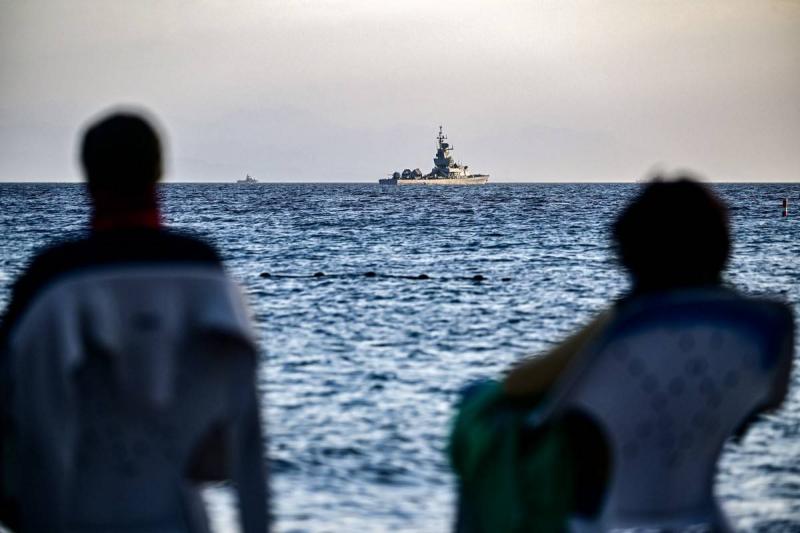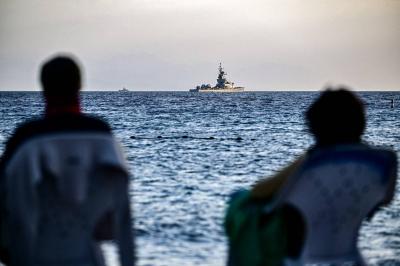The United States has developed a new formula to address the Houthi threats to international navigation, notably beginning the implementation of this "new plan" weeks ago without any announcement. Al-Arabiya and Al-Hadath confirmed two months ago that the Americans are in a contradictory position. On one hand, they want to continue protecting international shipping in the Gulf of Aden and the Red Sea, emphasizing the importance of their "defensive" military operations regardless of how long these operations last. Conversely, they have mentioned that their troops are fatigued and they have global priorities, with the focus not on the Middle East but on the Pacific operational area.
**Adjusting Plans**
Following these American signals, modified military plans emerged. The initial plan focused on intercepting Houthi missile attacks but evolved to include countering and "destroying Houthi capabilities." This past winter saw extensive American and British airstrikes targeting Houthi warehouses and missile platforms, both on land and at sea. The spring months were particularly challenging for the Americans, as they deployed an aircraft carrier and numerous warships while the Houthis continued their assaults and developed increasingly sophisticated bombardment methods, utilizing diverse types of attacks and quickly concealing their launch platforms after use.
The Americans faced difficulties flying over the airspace of certain countries during this period, forcing them to avoid some areas, leading to increased time and effort.
**Withdrawal of USS Eisenhower**
Significantly, about two months ago, the Americans withdrew the aircraft carrier USS Eisenhower from the Red Sea, leaving several smaller vessels equipped with missile defense systems, some of which carried fighter aircraft. The Americans later announced that the USS Roosevelt would leave the Pacific Ocean and head to the Central Command operational area. Central Command confirmed that the USS Roosevelt indeed entered its operational theater on July 12, and reports indicated it was in the Yemen area.
**Roosevelt in the Arabian Gulf**
A defense official who spoke to Al-Arabiya and Al-Hadath revealed that the USS Roosevelt has never reached Yemen, has not conducted any military operations in the Red Sea or Gulf of Aden, nor intervened in protecting international navigation in the Yemen area or addressed Houthi attacks. The defense official also noted that the USS Roosevelt passed through the Strait of Hormuz and headed into Arabian Gulf waters, conducting exercises and operations in that region before moving on to the Gulf of Oman, where it is currently located.
**Iranian Calm**
It is particularly striking that the Americans passed through the Strait of Hormuz without any announcement, and that the Iranians maintained silence. Typically, Iranian forces create a significant uproar during the passage of American warships towards Arabian Gulf waters. During this transit, the Americans did not report any Iranian naval presence or provocations, such as the deployment of fast boats circling around the carrier or its accompanying warships.
**No Ships Near Yemen**
The American defense official revealed in his conversations with Al-Arabiya and Al-Hadath that "there have been no American warships in the Red Sea or Gulf of Aden for weeks." In practical terms, the Americans have implemented a new military plan to counter Houthi threats "without the American Navy," relieving U.S. soldiers from the burdens of deployment for extended periods. The new American plan is modeled after the Afghanistan experience, where they now rely on aerial and electronic surveillance systems, controlling drones launched from ground bases in the Central Command area of operations, which can remain in Yemeni airspace for extended periods to monitor Houthi movements, with some equipped with air-to-ground missiles capable of striking Houthi missile bases before their cells can initiate an attack on vessels in international waters.
**Similar to Afghanistan**
These American measures closely resemble the "Afghanistan plan" or "over the horizon strategy," which involves withdrawing troops from the field while utilizing advanced capabilities for surveillance and monitoring to thwart attacks. It seems that Central Command has, through this new plan, managed to overcome many political and operational obstacles. Observers of the field situation in Yemen have noted a clear decrease in Houthi attacks since July 20, with American forces striking five missile bases and downing nine Houthi drones, as well as destroying ten naval drones, possibly reflecting a decline in Houthi missile capabilities, which explains their reliance on drones.
**Prolonged Conflict**
It is quite possible that both parties, the Houthis and the Americans, can sustain this state of bombardment and counter-bombardment for a long time, especially since the Houthis possess large quantities of missiles and drones, and the Americans are no longer compelled to address troop deployment issues or mobilize air and naval forces. The situation could become unsettled if the Houthis align with Iran and its proxies in the region, participating in a broader coalition in response to the killing of Ismail Haniyeh, head of Hamas's political bureau. For the Americans, they will have enough resources to thwart these attacks, sending some reinforcements, and once the crisis abates, they will return to the "over the horizon" strategy in Yemen as it currently stands.




